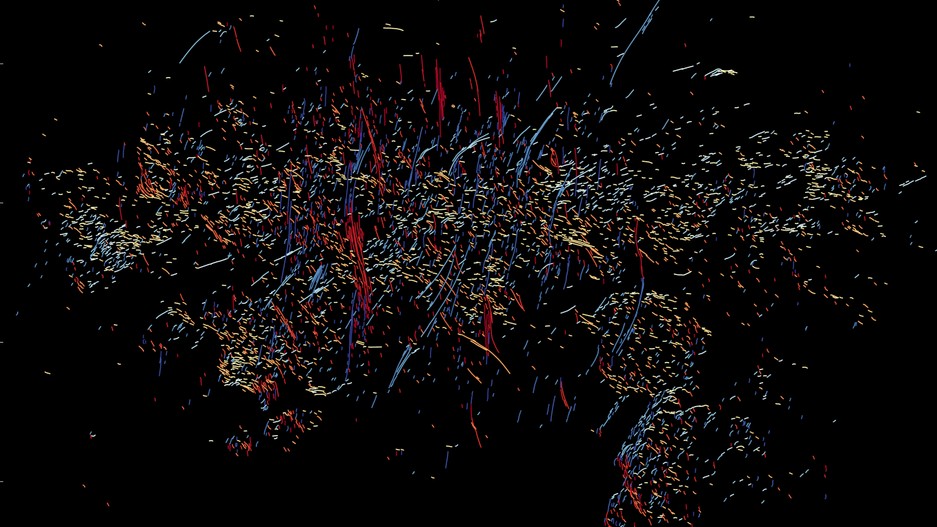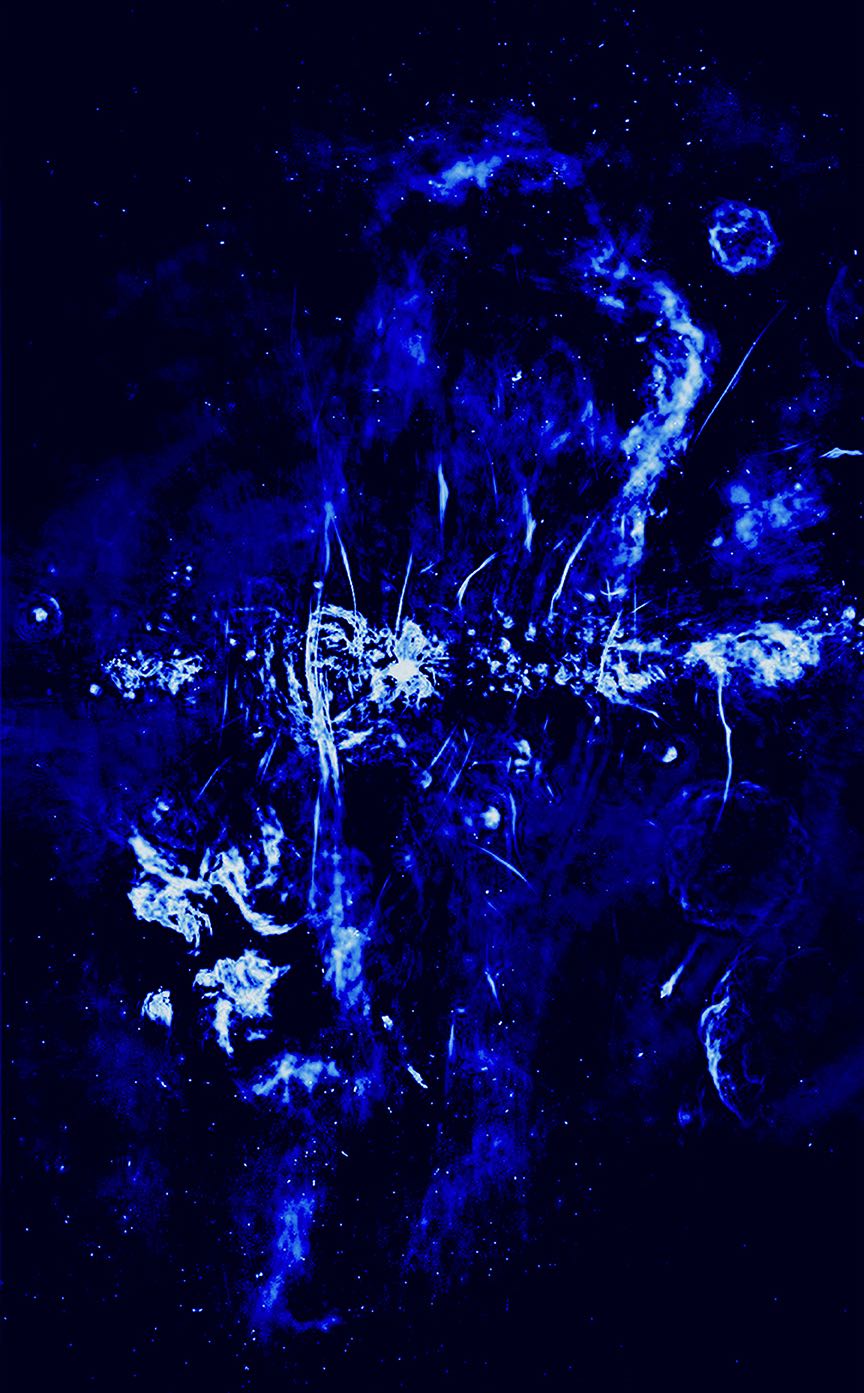
Astronomers have discovered hundreds of strange, stringlike structures at the center of our galaxy, possibly tracing the violent path of an ancient black hole eruption.
According to new research published June 2 in The Astrophysical Journal Letters, each of these previously unknown "filaments" measures between 5 and 10 light-years in length — thousands of times the distance between the sun and Pluto — but is visible only in radio wavelengths, meaning the structures were likely created by bursts of high-energy particles that are invisible to the naked eye.
When seen together, the hundreds of crackling filaments seem to point directly at our galaxy's central supermassive black hole, suggesting that they may be the unhealed scars of an ancient, high-energy black hole outburst that tore through the surrounding clouds of gas.
Related: What's the biggest black hole in the universe?
"It was a surprise to suddenly find a new population of structures that seem to be pointing in the direction of the black hole," lead study author Farhad Yusef-Zadeh, a professor of physics and astronomy at Northwestern University in Illinois, said in a statement. "I was actually stunned when I saw these … and we found that these filaments are not random but appear to be tied to the outflow of our black hole."
The Milky Way's central supermassive black hole, dubbed Sagittarius A* (or Sgr A*), is a cosmic monster with more mass than 4 million suns. Its intense gravitational pull binds our galaxy together — but its monstrous appetite has also resulted in some severe cases of interstellar indigestion.
Prior radio observations of Sgr A* conducted by Yusef-Zadeh's team turned up enormous bubbles of energy towering 25,000 light-years above each side of the black hole's maw, as well as roughly 1,000 vertical, strand-like radio filaments emanating from Sgr A* like the strings of an immense harp. Both of these mysterious phenomena were likely created by an ancient outburst from our galaxy's black hole, Yusef-Zadeh has suggested.

To detect the new crop of spindly, horizontal radio filaments, the researchers enhanced recent observations from the South African Radio Astronomy Observatory's MeerKAT telescope — an array of 64 interlinked radio antennas in South Africa — and reduced the background noise of nearby energy sources. The resulting images showed that the newfound filaments are about as thin as the previously discovered forest of vertical filaments. However, these new strands of energy appear to radiate from only one side of Sgr A*, whereas the previously discovered filaments line up all across the galactic center.
The newly discovered structures are also much shorter than their vertical counterparts, and there are far fewer of them. Despite these cosmetic differences, the researchers suspect the newfound structures were created by a similar eruption of energy from our galaxy's central black hole that may have occurred around 6 million years ago, the team estimated.
"It seems to be the result of an interaction of that outflowing material with objects near it," Yusef-Zadeh concluded. However, he added, his team must make new radio observations to "continually challenge our ideas and tighten up our analysis" of the violent past life of the monster at the center of our galaxy.







